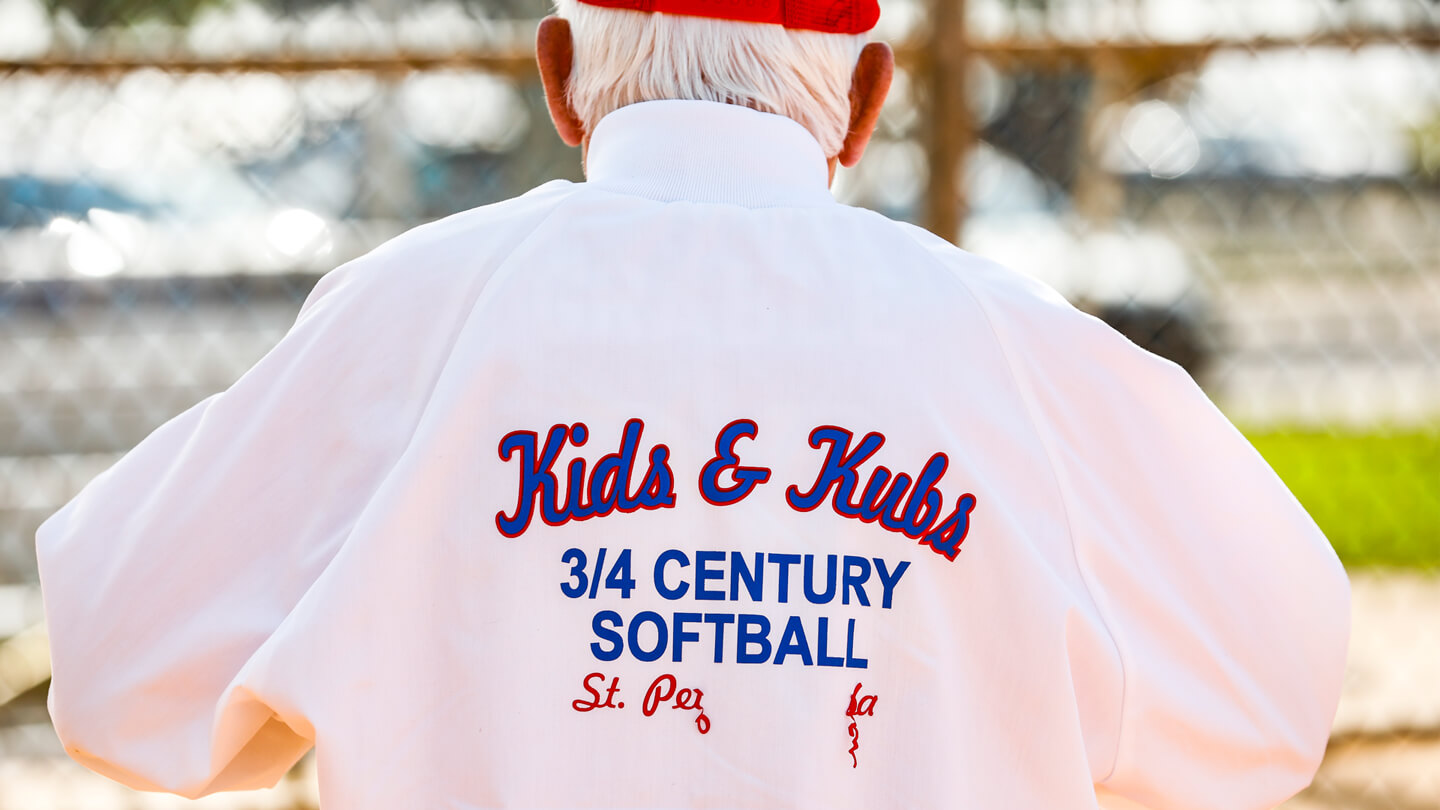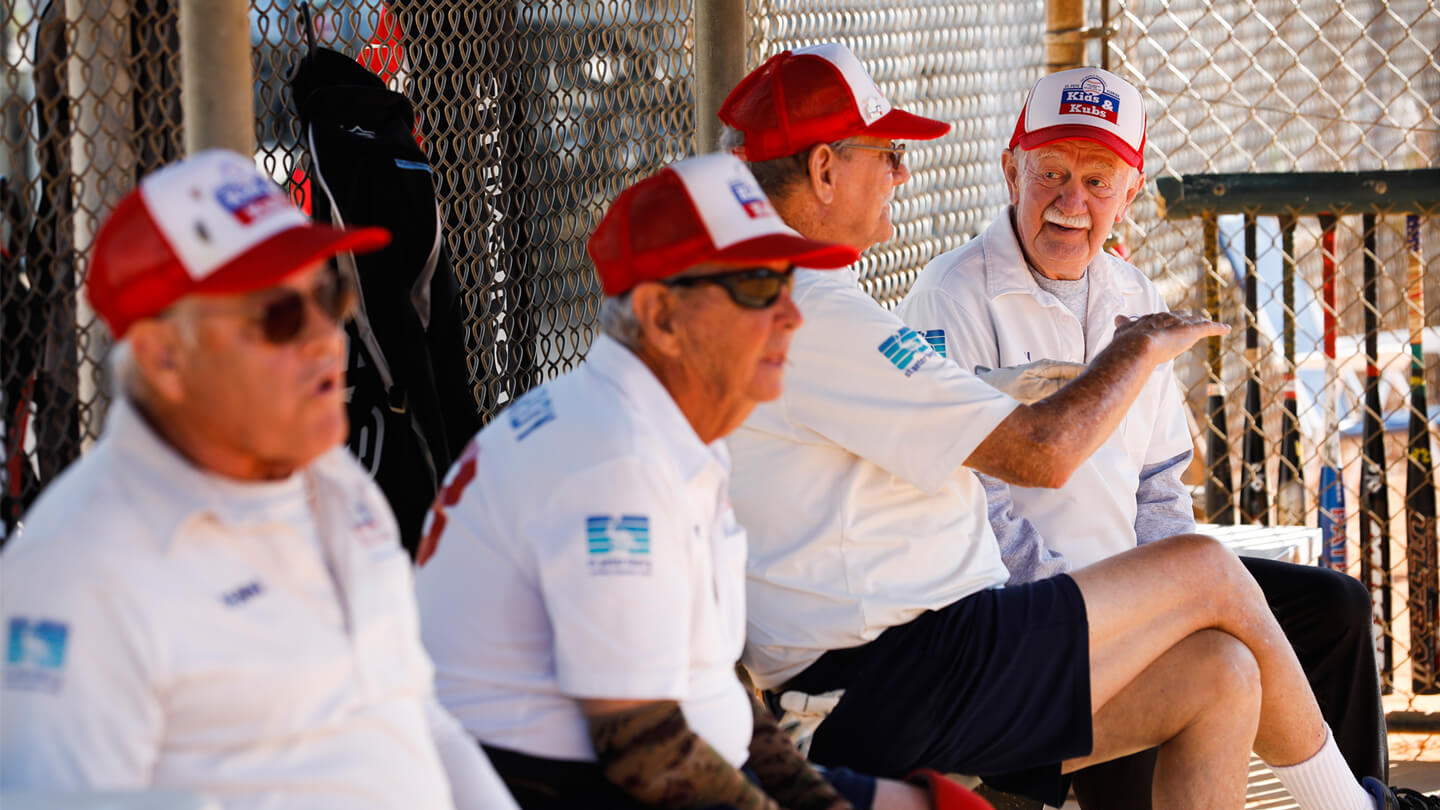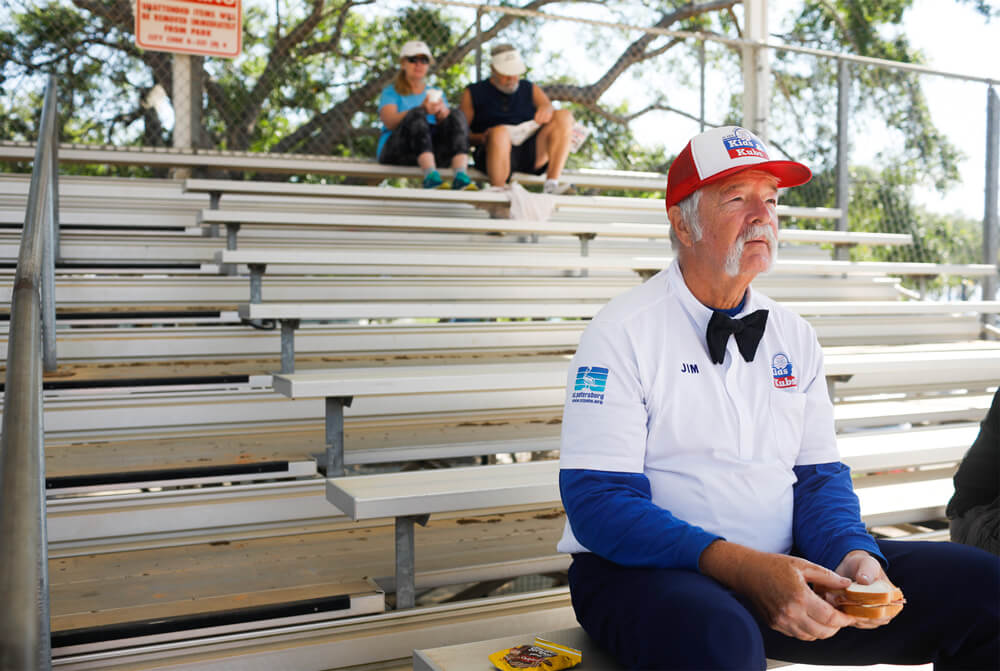They don’t lack for baseball games on Florida’s Gulf Coast, certainly not in spring, not even after the Rays’ Opening Day at the Trop. You’ll find one at every exit on every highway, from high-A through rookie ball and right down to American Legion, high school and Little League. But one in St. Petersburg is a matter of particular fascination: the annual charity game between the team representing the mayor’s office and an all-star squad from a rec league that plays at North Shore Park on a diamond between the palms and the bay.
Through the years, the exhibition has mostly been a one-sided affair. The mayor reaches beyond the confines of city hall to recruit police officers, firemen and assorted sides of beef on the civic payroll; meanwhile the rec-league team plays Tuesdays, Thursdays and occasional Saturdays and features a few locals and a bunch of snowbirds. The game is played on the rec league’s home field but that’s the side’s only advantage. The city hall squad was undefeated going into this year’s contest and, to the minds of those in the other dugout anyway, seemed to take a little too much glee in every double-digit victory.
The game was closer than usual this time around, but the home side was still down 13–10 to Mayor Rick Kriseman’s team going into the bottom of the seventh — and last — inning of the exhibition. When the rec leaguers came back to the dugout, no pep talk was needed. Shortstop Larry “Pops” McCurdy, his toothpick in place since he arrived at the diamond, had led dozens of fast-pitch softball teams to championships in Michigan and is always dialled in, no matter the situation. Pitcher Jimmy Scala, who sold his auto wrecking business in Oshawa, Ont., a while back, was swinging a hot bat and due up sixth in the inning if his teammates could keep it alive that long. All down the line, their game faces were on, their teeth gritted.
It was a rec-league team of odd bedfellows, from all over North America, from all kinds of backgrounds, white and blue collars, executives and rough diamonds. What they brought to the game to a man, however, was experience — if you went through the full lineup, they had more than a thousand years of it.
No misprint. Every player on the roster of the Kids & Kubs of St. Pete was at least 74 years old. Scala was 79. McCurdy, a member of the National Senior Softball Hall of Fame, was the oldest among them at 82. The youngest of them had played Little League when Mickey Mantle was a hotshot rookie with the Yankees.
With the Mudville nine trailing in the late innings in “Casey at the Bat,” baseball’s original bard, Ernest Thayer, spoke of “the hope which springs eternal in the human breast;” for Scala, McCurdy and their teammates in the Kids & Kubs’ dugout, hope had sprung, well, if not eternally, then about as close as any of us are likely to get.

Throughout the 20th century, St. Pete was a mecca for those born in the 19th. Florida was ever the U.S.’s favoured retirement destination, and the former fishing port was the first choice of the blue-haired set. Around the time of World War I, local businessmen and the city fathers lined the streets with green benches so old folks could go for walks one stop at a time, grabbing a seat to steel themselves for the next block. That was the pace of life in St. Pete: A brief shuffle followed by a full stop. Those who went there in retirement did so to put a life’s toil and excitement behind them.
Major League Baseball’s National League, founded in 1876, had not even really been dubbed the “senior circuit” in 1930 when a bunch of senior citizens got together to form the Sandspur League, which in time became known as the Three Quarter Century Softball Club. The players opted for uniforms that would become their signature: white pants, long-sleeve white shirts and black bowties; outfits you might expect to see at the lawn bowling green on Fifth Ave. In that first season, the lineups featured gentleman who were older than the game they played — the founding commissioner, a player named C.W. Eldridge, had been nine years old when Abner Doubleday first called balls and strikes in Elihu Phinney’s cow pasture in Cooperstown, New York. Eldridge was the league’s oldest player at the age of 100. Later, George Bakewell, resident historian and long-time publicist for the Kids & Kubs, played in games right up to his death at 107 and, in the summer of ’92, appeared in a Nike commercial at the relatively young age of 101. (In the ad, he claims the secret to his longevity is “the shoes” before suggesting, “Or maybe it’s the oysters.”)
The history of the league is like that — largely anecdotal, beggaring belief and passed down from elder to elder. For instance, no one can say for sure how it took the name Kids & Kubs. Credit is given to Mrs. Evelyn Rittenhouse, date unknown, reasons likewise. There is, however, abundant hard evidence of the Sandspur League’s celebrity in its early days: black-and-white photos of Babe Ruth’s and Lou Gehrig’s regular appearances at the old timers’ charity games. In the ’40s, with crowds of up to 5,000 if the vintage postcards are to be believed, the draw of the Kids & Kubs rivalled the Yankees’.
The public fascination, then and now, is easy to understand. Like the spry seniors who happened upon a swimming pool filled with rejuvenating waters in the film Cocoon, the members of the Three Quarter Century Softball Club seem to have found a way to be made young again. Rather than a Fountain of Youth, their method is simply the national pastime, the commonplaces of a diamond, a bat and a ball. Not the shoes. And not the oysters, either.

Crowds of 5,000 are the stuff of bygone days. On a Tuesday morning in late March of this year, no more than a dozen spectators were sitting in the shaded stands behind home plate to take in a pair of seven-inning games. And likewise, the traditional all-white and the bowties are now reserved for special occasions. These days, the players wear standard uniforms that you’d find on any softball diamond, a few opting for shorts on a hot day, even if it means baring knee braces or wraps.
In all, 55 gentleman and one lady signed up for league membership and paid their $100 dues for the 2018–19 season, slightly down from years past. A drop in the number of Canadian players is a possible contributing factor. Jim Trott and Gerry Mayea, both from Windsor, Ont., and Scala, originally from the east end of Toronto, are the only Canadians playing regularly. (Bruce Welch, a 90-year-old from Keswick, Ont., and a former member of the Dunedin Grey Jays, wears No. 00 but mostly only attends special events as an honored alumnus.) Says the 81-year-old Trott: “We’ve usually had a half-dozen Canadian ballplayers since I’ve been coming down here. These days, the exchange rate with our dollar hurts us snowbirds.”
In the two games on the penultimate day of the league’s 89th regular season, the designated home teams wear white; those first up don red. Even before the opening pitch, spectators taking in the Kids & Kubs for the first time are surprised by the scene of outfielders backing up for an 80-year-old in batting practice. It seems the swing is the last thing to go.
The bench jockeying doesn’t even wait for the games to start. A couple of pitches during BP are off the plate and Scala reaches for them anyway, sending weak grounders barely farther than a flush bunt. The effort sets off old-school adolescent taunting: “Nice swing, is that your girlfriend’s bat?” All of it rolls off Scala’s back, which is wider than the average bouncer’s, the residue of a working life spent throwing around the steel bones of old wrecks in his scrap yard and pushing iron in his basement gym in retirement.
When the game starts, Scala is pitching, working his way through the roster, and with every batter coming to the plate, the age of those in play comes into a sharper focus. Concessions have to be made and most of them are to allow for fading mobility. The outfield features two players in centre and even so, a lot of balls find gaps and aren’t relayed into the infield until they stop rolling.
Two bags are positioned at first, one outside the foul line for baserunners to avoid collisions with infielders. A few batters get designated runners because of injuries, although each team only gets one pinch-runner per inning. Just as the swings of the better players have endured, so too do the gloves and arms. A sharply hit grounder to a surehanded infielder like McCurdy, a retired Ford autoworker from Detroit, will see a batter gunned down before he’s even 20 feet up the basepath.

Any sense of the formality that existed in bygone eras is stripped away in the middle innings. The Kids & Kubs is an organization that prides itself on precisely that: organization. As a result, in these moments there is a disruption of life’s order that, if reactions be the measure, ranks somewhere along the lines of a Category 2 hurricane. It starts with a couple of close plays left to an umpire’s judgement, a runner who is called out but then safe when an infielder drops the ball. A couple of runs cross the plate, a bit of confusion about the batting order stalls the proceedings, and then the team in the field and the runners on the basepaths start back to their dugouts with only two out. When the number of outs is sorted, the fellow who was on first then walks out to second base, evidently presuming that he would have advanced to the uncovered bag as the whole schmozzle unfolded. What follows is a dust-up that plays out like a scene from Grumpy Old Men. “You can’t just put a man on second base for no reason,” says Mitch Kanaan, No. 43 in your program, playing a part fit for Walter Matthau. “You just put a man on second base for no reason.”
Short of kicking dirt on the umpire’s sneakers or hurling a base into the stands, Kanaan does the full Billy Martin and players in the other dugout take maybe too much delight in goading him on.
“The umpire made a decision.”
“There was only two batters. There can only be two outs.”
“Too many guys don’t know how to play this game.”
Kanaan flops his arms in high dudgeon.
It’s an argument you’d typically see in a sandlot game between grade-schoolers. But in a contest between venerable adults, seven or eight or even nine decades after they first picked up a bat? Who would let a game of so little consequence so late in life matter so much?

When left to self-reporting, the players themselves could not identify any particular element of personal history that enables or compels a person to take the diamond at an age when reasonable adults haven’t donned a glove or swung a bat for years. “We get people from all walks of life,” says Jon Reynolds, an 80-year-old semi-retired school administrator from Michigan. Some played from early childhood, though McCurdy and Scala are conspicuous exceptions. McCurdy’s parents couldn’t get him a ride from the family farm in Milford, Mich., to town for Little League games. For his part, Scala, didn’t play as a kid, a young man or even into middle age. He makes it sound like these childish things had to wait. “I didn’t do sports when I was in high school and after that it was time to go to work and feed my family,” Scala says. “Only when I got close to retirement did I start playing softball.”
Some managed to combine work and play without much trouble, regardless of vocation. Look through the bios and you’ll find a lawyer, a dentist, a carpenter, an electrician, a general contractor, a steamfitter, a funeral director, a pilot, an engineer and a professional gambler — basically a full Yelp directory.
The personalities also run the gamut. You have tightly wired blowtops like Kanaan, but also Richard White, a retired pastor. For every gruff hardass like Scala there’s someone arriving at the diamond fresh from an early morning yoga class, like Dr. Dan DeRussy, DDS, who has maintained his genial spit-sink-side manner along with a triathlete’s lithe physique.
On At the Letters, Ben Nicholson-Smith and Arden Zwelling take fans inside the Blue Jays and around MLB with news, analysis and interviews.
Almost half the players are at least 80 years old and nine are at least 84. A lot of the locals and those who retired to St. Pete early played three days a week in the Half Century Softball Club that uses the same diamond at North Shore Park. In fact, a few play in both leagues, meaning they spend as much time at the ballpark as the boys in spring training. DeRussy has done it the past three winters and has committed to a fourth doing double-duty. “This might be my last season doing that. We’ll see how I feel about it next fall. I’d like to continue to play [in the over-50 league] as long as I feel I can perform.”
To players in the Three Quarter Century Softball Club, “perform” translates to “run.” The great featherweight boxing champion Willie Pep used to say, “The first thing to go are your legs. Then it’s your reflexes. Then it’s your friends.” This is doubtless the sequence for old-timers baseball. McCurdy never stopped hitting in the Half Century — he played in it until age 78, owns the career record for hits (3,257) and is one of three players in its Hall of Fame. But he had to walk away from it simply because he couldn’t run well enough to field a position. Says the 82-year-old: “It’s cut and dried, not something that you can fight. No matter how good you swing the bat or throw, your legs make that decision for you. With pinch-runners and the way the game is played here, you can play a long time in the Kids & Kubs.”
As to why someone would want to do that, it appears the unexamined baseball life is worth living, which is to say, most of those who plan to play a long time in the Kids & Kubs don’t spend a lot of time thinking about the attraction or benefits. “It’s simple … if I didn’t enjoy the game, I wouldn’t be playing,” McCurdy says.
DeRussy makes a case that seniors’ baseball might be a sunbaked, slightly aerobicized version of crosswords and sudoku — that is, just having to know the count helps maintain mental acuity. “It forces you to focus,” he explains. “In the field, you have to know who’s up, how many outs there are, where you’re going to have to throw if you field the ball. Same thing at the plate — you’re making decisions every pitch. It’s a mental game.”
Gustavo Tijerino, a former lawyer and Scala’s Nicaraguan-born catcher, is an advocate for the league but also, after a fashion, a living example of its benefits. “I joined the Kids & Kubs when I was 79 and ran the bases in 17.5 seconds,” Tijerino says. “Five years later, 84, I’m still a pinch-runner. I lift weights in my home gym and run a mile-and-a-half or two miles a day. A lot of times if they’re short players, I’ll play in two games, 14 innings in the morning. One day I played in three games. When I played ball in college, back in Nicaragua, in my 20s, I was 145 pounds. Now, I’m 149. I have a twin brother, a surgeon in Miami. He stopped being active around 50 and his health is nothing like mine. Whether [the benefits are] the result of the exercise, the activity, the social part, or all of it, it doesn’t matter. The game doesn’t just make me happy, but makes the rest of my life better.”

The most famous moment in seniors’ baseball would stand as the most memorable in any ordinary calendar year: 75-year-old Luke Appling hitting a homer into the left-field seats off fellow Hall of Famer Warren Spahn at the inaugural Cracker Jack Old-Timers Classic in 1982. Appling, a.k.a. “Old Aches and Pains” because of his frequent complaints about bumps and bruises, only missed out on 3,000 career MLB hits because of two years of service in World War II, but had just 45 homers in 20 major-league seasons, all with the White Sox. Not a single one of those at bats was ever as famous as that shot in the Old-Timers Classic.
Appling’s jog around the bases was like any you’d see at a Kids & Kubs game, albeit with the bags much farther apart. Appling acknowledged as much, and brought down the house, when the media asked him about it. “I’m gonna single to right from now on,” he said. “Otherwise, it’s too far to run.”
Cracker Jack couldn’t have hoped for a more auspicious launch to its old-timers game. If you watched it play out, seeing Willie Mays and Hank Aaron standing in the batter’s box, it was like Cooperstown come to life. Yet the Old-Timers Classic was played only three more times, the final in 1985. Other groups tried to raise funds for the MLB Baseball Assistance Team by staging old-timers games at major-league ballparks but they too wound down, the last was played at Dodger Stadium in August of 1995.
The Yankees have hosted an annual Old-Timers Day featuring those who have worn the pinstripes, but the games have lost a little of the glitter since 1998, when Joe DiMaggio was last introduced as “baseball’s greatest living player” — you won’t find Jeter or A-Rod out in the field. And last summer, the Red Sox had their first alumni game in 25 years, with Luis Tiant’s team beating Dwight Evans’s on a home run by Julio Lugo.
These exercises in nostalgia in Yankee Stadium and Fenway, though, are the somewhat star-studded exceptions. Many of the biggest names of more recent vintages don’t seem much inclined to play nine innings of nostalgia. But even if it’s a dead issue at the highest level, baseball for venerables thrives at the grassroots, which is maybe the best place for it. Senior Softball USA lists more than 70 teams ranked from triple-A to major to major-plus in the 75-and-over category, with one Canadian powerhouse, the Masters Marauders of Surrey, B.C., in the latter, highest category. (The Marauders have dozens of tournament victories, including a world championship in the over-60 flight a few years back.) On any given weekend in the summer, all across the continent, you can find age-group tournaments where kids come out to watch their grandparents play.

The game against the mayor’s office stands apart from all the others on the schedule, though, because it gives the Kids & Kubs a chance to take on younger challengers, a chance to prove the old dogs can still hunt.
Those in the mayor’s lineup couldn’t fully understand who they were dealing with. They certainly didn’t know about McCurdy’s 3,000 hits in the Half Century Club, the hundreds more in the Kids & Kubs and the thousands of games he played on summer nights after his shifts sending carburetors down the production line.
They might have known about Ed Broomes — he worked 30 years for St. Pete’s fire department, after all. Still, they were in the dark about Gerry Mayea and Jim Crook, all the years of hardball they played, how they went home from Florida to compete on even terms with players young enough to be their grandsons. And they didn’t know that Scala fields calls from U.S. seniors teams looking to add a ringer for tournaments.
In the bottom of the seventh inning, Scala was just hoping to get to the plate — the Kids & Kubs would have to scratch out a couple of hits hit to keep hope springing this day. As it turned out, a couple of balls found gaps and another had eyes, so that Scala, the sixth batter of the inning, stepped into the box with the bases loaded and two out. The mayor lobbed up the ball, on the inside half of the plate, and Scala stepped into it and dead-pulled it to left field.
“Get out,” he growled.
He stood at the plate and watched it. He tracked its arc. The left-fielder ran to the fence. In the dugout, Scala’s teammates got to their feet. They weren’t going to razz him about swinging his girlfriend’s bat. He broke into a trot just long enough to let the satisfaction sink in.
Kids & Kubs 14, City Hall Stars 13.
The teams shook hands and the mayor offered platitudes. “These are usually really competitive games,” Kriseman would say later. “It’s great to play the Kids & Kubs — they’re a tradition in St. Petersburg … an important part of the community. They’re a great example to our seniors and really people in all age groups, [showing] how exercise and staying engaged is so important to the quality of life.”
To Jimmy Scala this wasn’t about setting examples or history or symbolism or anything else. It was a swing and a game. “I knew I got all of it,” Scala said. “After last year, the way we got beat, it bugged me ever since. We wanted this one. I didn’t want to wait another year, y’know?”
What they say about old soldiers is simply turned on its head for ballplayers of a respectable vintage: They don’t fade away. They just have their last at-bats.
Designed and edited by Evan Rosser.



